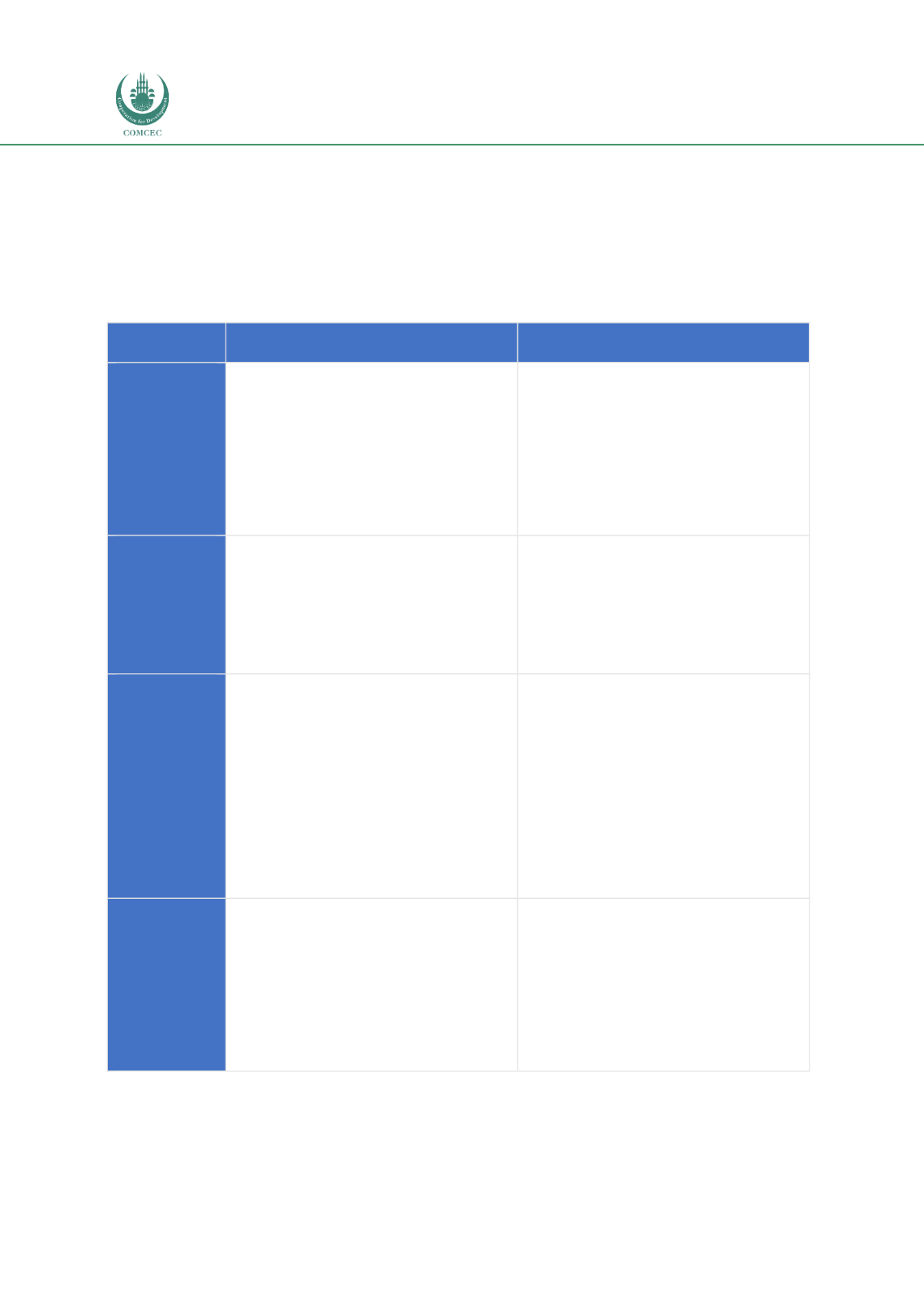

Islamic Fund Management
54
3.1.3
Advantages and Disadvantages of Various Funds
With any type of investment, investors are exposed to risks and rewards. Having a clear
financing objective and awareness of the associated risks will help manage the expectations on
investment performance. A summary of the potential advantages and disadvantages of funds
by asset class is presented in
Table 3.4
.
Table 3.4: Advantages and Disadvantages of Funds by Asset Class
Asset Class
Advantages
Disadvantages
Equities
Higher returns than fixed deposits and
other types of funds.
Steady income.
Capital appreciation.
Portfolio diversification.
Funds are professionally managed, with
access to better information compared
to average investors.
Minimum entry cost for investment.
Exposed to upfront and recurring
transaction costs that will have an
impact on returns.
Unpredictability - cyclical market
conditions may not suit risk-averse
investors.
Medium-to-long-term
investment
horizon.
Fixed-
Income
Securities
Portfolio diversification.
Suitable
for
low-to-medium-risk
investors.
Steady income.
Funds are professionally managed.
Minimum entry cost for investment.
Exposed to upfront and recurring
transaction costs that will have an
impact on returns.
Less exposure to market volatility
compared
to
equity-based
funds.
However, investors are still exposed to
market cycles.
ETFs
Offer
investors
more
diversified
exposure than investment in individual
stocks/forex/commodities.
Entry cost is lower compared to direct
investments, e.g. gold.
Lower
annual
management
fees
compared to unit trust funds.
Transparency – investors know exactly
which assets are held in the ETF.
Since ETFs are traded like stocks,
investors have easy access to liquidity.
Funds are professionally managed.
Limited number of ETFs to choose from
in the market compared to unit trust
funds.
Intraday price swings may make short-
term investors jittery.
Costs could be higher than trading in
stocks, which attract no management
fees.
REITs
Portfolio diversification.
Potentially higher returns in return for
medium-level risk.
Income is secured by long-term leases.
Properties are professionally managed.
Potentially slower growth since only
10% is allowed to be reinvested.
Exposed to potentially high leverage
ratios.
Higher tax rate on dividends.
Need to operate in a REIT-compliant
manner.
Sensitive to other higher-yielding
investments.
Sources: Sharmila (2014), RAM
















